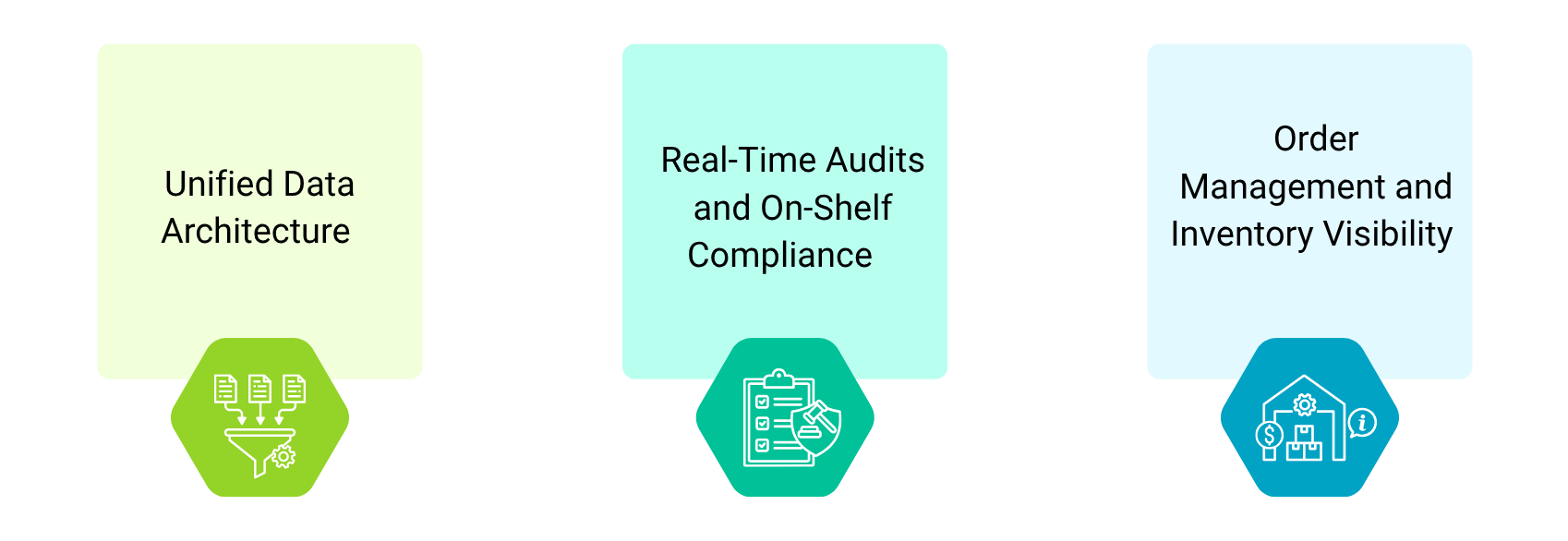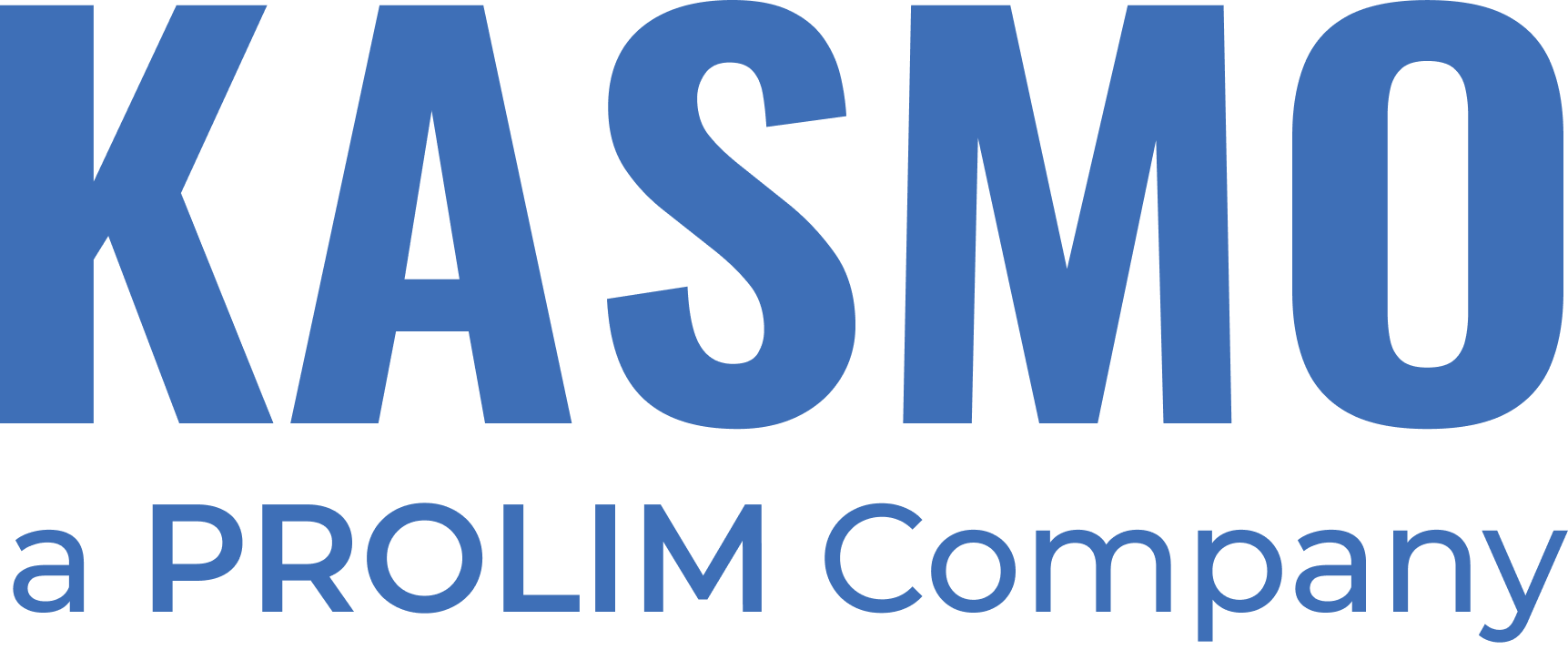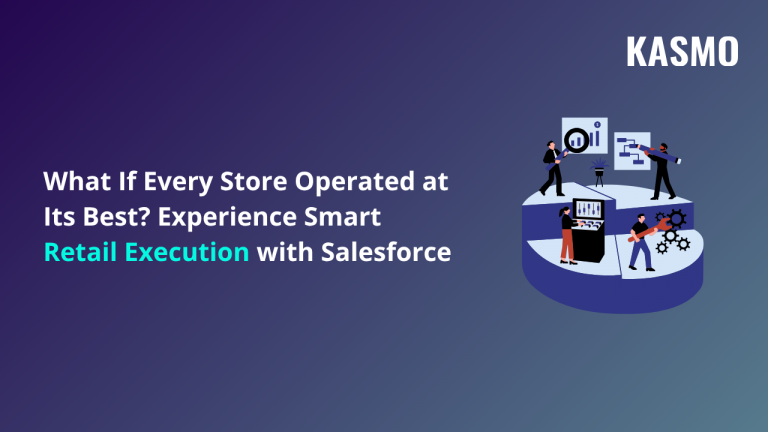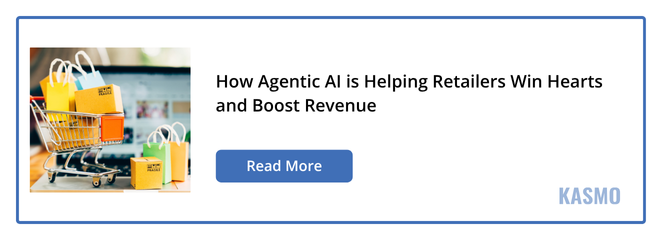Success in retail isn’t just about having great products; it’s about ensuring they are available, visible, and engaging at the right moment in-store. Yet, according to Salesforce, 38% of in-store product and marketing initiatives aren’t executed as intended, highlighting the challenges brands face in translating strategy into action. Retail execution bridges this gap, ensuring that every shelf, promotion, and customer interaction drives engagement, sales, and loyalty.
Retailers can adopt technologies like AI, predictive analytics, and Salesforce Consumer Goods Cloud, along with data-driven strategies to enhance the in-store experience. This helps to turn every store visit and display into an opportunity for measurable growth. In this blog, we explore what retail execution is, why it matters, the key strategies that drive it, and how Salesforce Consumer Goods Cloud helps to achieve it.
What Is Retail Execution?
Retail execution is where a brand’s strategy comes to life on the store floor. It’s the process of planning, implementing, and monitoring strategies that directly influence how products appear, perform, and sell in retail environments. In simple terms, it’s about ensuring that every touchpoint inside a store, from shelf placement to promotions, works effectively to drive sales and enhance customer experience. It includes activities like:
- Ensure the right products are always in stock and easy to find
- Effective shelf visibility and merchandising that draws customer attention
- Running in-store campaigns to encourage impulse purchases.
- Tracking stock levels to prevent overstocking and stockouts
- Competitor analysis and gain market Insights
Why Retail Execution Matters?
Retail execution is a strategic differentiator for consumer goods brands. It ensures that every product on the shelf reflects a brand’s promise and enhances the overall customer experience. It is essential to
Enhancing Customer Experience
Retail execution ensures shoppers can easily find what they’re looking for, with shelves that are well-stocked, displays that are visually appealing, and promotions that are relevant and timely. A smooth, in-store experience builds customer satisfaction and encourages repeat visits — a key to long-term loyalty.
Boosting Sales
When products are consistently available and positioned strategically, the likelihood of purchase increases. Effective retail execution reduces out-of-stock situations, captures shopper insights, and optimizes assortment strategies.
Strengthening Brand Loyalty
When shoppers enjoy consistently positive in-store experiences, they’re more likely to come back. Effective retail execution creates uniformity across locations, strengthening customer trust and long-term brand loyalty.
Improving Operational Efficiency
Field representatives and sales teams play a crucial role in monitoring execution and capturing real-time data. With the right technology and analytics tools, brands can optimize routes, track compliance, and respond quickly to market dynamics — all of which streamline operations and reduce costs.
Effective Strategies to Improve Retail Execution

Merchandising and Visual Display
Effective merchandising and visual display are the core aspects of retail execution. The way you display products in-store directly influences shopper perception, dwell time, and purchase decisions. This includes shelf placement, product displays, and the use of point-of-sale materials. Strategic shelf placement ensures that high-margin and high-demand products are positioned at eye level, which helps to drive immediate customers’ attention. Well-designed POGs help maintain consistency across stores, ensuring that displays align with brand standards and promotional goals. Compelling visual merchandising makes your products stand out, ensures brand consistency, drives impulse purchases, and more sales.
Effective Inventory Management
Tracking your store inventory helps to meet customer demand with product availability. Poor inventory management leads to stockouts or overstocking, both of which impact profitability and customer satisfaction. Retailers can adopt data-driven forecasting and real-time tracking to ensure optimal stock levels for effective inventory management. Data and analytics help to identify fast-moving products, predict seasonal demand, and automate replenishment cycles. Proper inventory management ensures that customers always find what they need, along with reducing waste, lowering storage costs, and maximizing sales potential.
Promotional Execution
Promotional execution is the process of ensuring a brand’s retail promotions are carried out efficiently and completely, from start to finish, to maximize sales and return on investment. This involves careful coordination between marketing, field teams, and retailers to ensure successful execution. Retailers can perform activities like displaying point-of-sale materials, implementing price reductions, and arranging secondary product placements. These promotions must be tailored to specific localities, seasons, and target audiences. Integrating in-store promotions with online campaigns creates a cohesive omnichannel customer experience that strengthens brand visibility and drives sales.
Retailer Relationships
Maintaining a good relationship with retailers helps foster trust, communication, and collaboration that impacts in-store results. Collaborative relationships foster trust, transparency, and mutual growth. Regular communication, performance reviews, and data sharing help both parties align goals and execution standards. Regular check-ins, feedback loops, and collaborative planning are key to long-term mutual growth. Incentive programs like performance bonuses and exclusive promotions motivate retailers to prioritize the brand’s products. This helps brands achieve better shelf visibility, stronger compliance, and long-term collaboration that benefits all stakeholders.
Accelerate Retail Execution with AI and Intelligent Technologies
Agentic AI for On-Shelf Compliance
Agentic AI is advancing the process of maintaining on-shelf compliance. They help retailers to check that every product is placed correctly, priced accurately, and displayed according to brand standards. Traditionally, field reps manually checked shelves, which were time-consuming and error-prone. AI systems have the capabilities to automatically scan shelf images in the store, detect out-of-stocks, and instantly trigger restocking orders. This allows retailers to act instantly, restock faster, and maintain consistent brand visibility. It also helps human staff by taking over data-intensive and repetitive tasks. This level of automation increases efficiency and resolution, which results in improved shelf accuracy, reduced audit times, and higher sales.
Unified Data and CRM Integration
A unified data and CRM ecosystem is the backbone of effective retail execution. Brands can integrate customer data, sales performance, and field insights into a single platform. This helps to gain a holistic view of both in-store and customer activities. Retailers can easily track store performance, understand customer buying patterns, and create targeted campaigns. Sales performance, inventory levels, and execution compliance can all be tracked within a unified system, allowing decision-makers to connect in-store execution to customer behaviors and outcomes. This detailed view provides help in better customer segmentation, conducting personalized marketing, and gaining higher ROI.
Enhancing Customer Service through Chatbots
AI-powered chatbots help to elevate your retail customer service. They provide 24/7 assistance, personalized recommendations, and instant issue resolution. Chatbots eliminate customer wait times by offering quick support, addressing common questions about business hours, product availability, or handling order tracking. One step ahead, AI-powered chatbots can analyze customer data, browsing history, and past purchases to provide tailored product recommendations and special offers. They can also provide a consistent experience across all platforms, like websites, mobile apps, and social media channels. For store associates, chatbots also act as intelligent assistants, as they help to retrieve information quickly and improve service quality. These advanced solutions help retailers achieve higher customer satisfaction, reduce service costs, and gain customer loyalty.
Enhanced In-Store Experience
As today’s customers expect experience-driven shopping, AI is key to creating memorable in-store journeys. AI-powered technologies like computer vision and IoT devices collect essential data, including customer movement, dwell time, and engagement zones, which help to enhance the in-store shopping experience. Retailers can deploy smart shelves, automated checkout systems, and personalized recommendations based on real-time analytics. They help to create a seamless customer experience by making shopping faster, easier, and more enjoyable. It also acts as a driving force behind increasing customers’ return rates and loyalty.
Predictive Analytics
Predictive analytics empowers retailers with predictive and data-driven decision-making. AI models analyze historical data and current market trends to forecast demand, optimize inventory, and predict the success rate of new promotions. Retailers can anticipate stock shortages, adjust pricing strategies, and even identify which products are likely to perform best in specific stores. It also provides insights into SKUs’ performance, helps brands refine assortments, optimize pricing, and localize strategies for better results. Using Gen AI further helps to create optimized planograms and suggest merchandising strategies to cater to local audiences. The ability to predict and act ahead provides a competitive edge, resulting in higher sales, reduced waste, and improved customer satisfaction.
Effective Retail Execution with Salesforce Consumer Goods Cloud
Salesforce Consumer Goods Cloud is purpose-built to help CG brands manage their entire retail execution process within one connected ecosystem. It brings together customer data, store operations, field insights, and AI-driven recommendations to make every visit more impactful. By using Salesforce, retailers can manage inventory across channels, improve visibility into sales trends, and analyze customer purchase behavior across multiple channels.

Unified Data Architecture
According to a Salesforce report, only 17% of store associates have access to a unified view of customer data, forcing them to navigate disconnected systems in their daily work. Salesforce provides Customer 360 capability, which allows retailers to gain a unified view of in-store and customer behavior in one place. It helps to break down data silos by consolidating information from various sources, providing a single view of customer, product, and promotion data for more accurate planning and execution. Unified data architecture enables retailers to share information across departments and teams seamlessly. This helps to better understand their customers, plan retail strategies, and increase sales.
Real-Time Audits and On-Shelf Compliance
Maintaining planograms and shelf compliance is a key part of retail execution. Using digital surveys, photo capture, and guided checklists, field reps can conduct real-time audits to verify product placement, promotional displays, and competitor activity. Salesforce syncs this data instantly with the main dashboard, allowing managers to track compliance, identify gaps, and make quick corrections. This leads to consistent brand representation and better product visibility across stores. With Salesforce, retailers have access to predictive insights that can help them anticipate customer needs and offer relevant recommendations.
Streamlined Order Management and Inventory Visibility
Salesforce Consumer Goods Cloud transforms inventory management by providing real-time visibility, intelligent forecasting, and automated replenishment. The platform integrates data across sales, supply chains, and retail systems to provide a single, unified view of inventory levels. This helps field reps instantly view stock levels, identify shortages, and create replenishment orders directly from their mobile devices. Powered by Einstein AI, it predicts demand based on sales trends and promotions, helping brands avoid stockouts and overstocking. This real-time visibility ensures that products are always available where demand exists. With the Salesforce CG cloud, retailers can enable data-driven inventory management to ensure product availability, reduce waste, and boost profitability.
Conclusion
The future of retail execution lies in intelligence, integration, and innovation. Retail execution is about creating consistent, high-quality in-store experiences that influence customer decisions and build brand loyalty. When done right, it directly impacts visibility and growth. By adopting AI-driven insights, real-time data, and connected platforms like Salesforce Consumer Goods Cloud, brands can build smarter, faster, and more effective execution strategies. This further helps to improve on-shelf availability, optimize inventory, elevate customer experience, and brand loyalty.
If you’re ready to take your retail execution to the next level, Kasmo is your trusted partner. With deep expertise in Salesforce implementation, we empower retailers to connect strategy with seamless in-store execution. Connect with Kasmo to boost product visibility, improve efficiency, and customer satisfaction to drive retail success.




